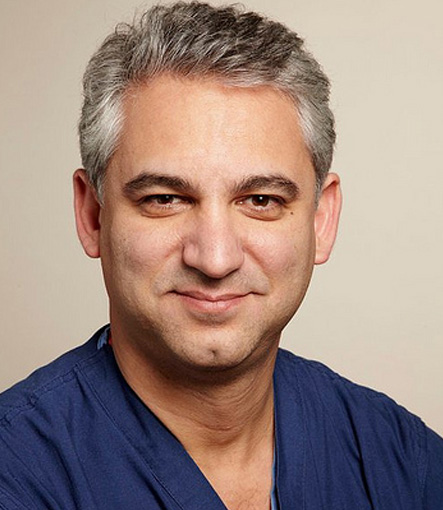After being diagnosed with prostate cancer, the wide variety of treatment options can be confusing for even the most educated of patients. Advice comes from all angles: Your doctor, friends and family, reports in the news, and even advertisements. All of which make it difficult to know which treatment is best for you. Should you be considering Cyberknife, hormones, radiation, surgery, or some combination of these?
If detected early, the cure rate for prostate cancer is almost 100 percent. This means that most men who are diagnosed at an early stage will be disease-free after five years. These shocking statistics reiterate the importance of getting screened and staying one step ahead of this “silent killer.” Additionally, patients should know they are not alone; more than 2.5 million men are living with prostate cancer in America. Fortunately, there are many viable treatment options available for prostate cancer and a cure is possible.
Prostate cancer is a challenging disease for men and their physicians as it can present with virtually no symptoms and progress at an unpredictable rate. Some prostate cancers are slow growing and cause no significant impact, while others silently and quickly spread. The aggressiveness of a patient’s prostate cancer is not definitively known at the time of diagnosis, leaving men to weigh the risks of the disease with the risks of treatment. Erectile dysfunction and urinary incontinence are among the top treatment concerns.
Although there are various options, the truth is that in the case of prostate cancer treatment, one size does not fit all. Consulting with experts in the field is often the best way to go when trying to figure out the best treatment option for you. Your doctor will take into consideration your age, risk, medical history and your expectations.
Here are some facts about surgery and radiation:
| Surgery | Radiation | |
| Length of treatment |
One-time treatment for 1-2 hours, on average
1-2 night hospital
|
EBRT is typically administered 5 days a week for 5-6 weeks
CyberKnife® is typically done over the course of 1-5 |
| Accuracy | Prostate is visualized and removed
|
Radiation is targeted at prostate based on imaging data, dosage and location is approximated |
| Side effects during treatmtent | Risks associated with surgery/anesthesia
|
Fatigue, skin inflammation, frequent/difficult/uncomfortable urination, rectal bleeding or irritation, hemorrhoids, diarrhea |
| Hormone therapy necessary? | No
|
Yes |
| Cancer staging | Entire specimen can be analyzed
|
Exact type, extent based on biopsy or approximated |
| PSA follow-up | Testing begins at 6 weeks post-op
PSA remains <0.1
|
Testing begins ~2-3 months post-op
Will not reach lowest point for 18-24 months Majority of men experience temporary rise in PSA |
| Possible effects after treatment |
Impotence and incontinence
|
Bowel dysfunction
Impotence and incontinence |
| Secondary therapy possible? | Radiation possible after surgery
|
Surgery can be difficult to do after radiation |
| Increased risk for secondary cancer? | No | 5 percent increased risk of rectal or bladder cancer |
In my practice, many of my patients have benefited from robotic prostatectomy. Surgery is the only option that removes the entire prostate, giving you accurate staging of your disease. This helps your doctor create a better long-term plan of care for you. And after surgery, radiation is still possible as a secondary treatment.
Beyond treatment modality, the expertise of the specialist plays a leading role in treatment outcomes. With robotic prostatectomy, in particular, a man’s success in overcoming prostate cancer and maintaining quality of life, hinges on the experience and skill of his surgeon. So make sure you choose your doctors and surgeons wisely.
Dr. Samadi is a board-certified urologic oncologist trained in open and traditional and laparoscopic surgery and is an expert in robotic prostate surgery. He is chairman of urology, chief of robotic surgery at Lenox Hill Hospital and professor of urology at Hofstra North Shore-LIJ School of Medicine. He is a medical correspondent for the Fox News Channel’s Medical A-Team and the chief medical correspondent for am970 in New York City. Learn more atroboticoncology.com. Visit Dr. Samadi’s blog at SamadiMD.com. Follow Dr. Samadi on Twitter and Facebook.






